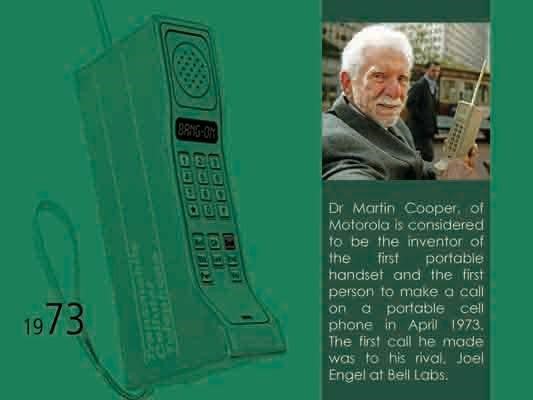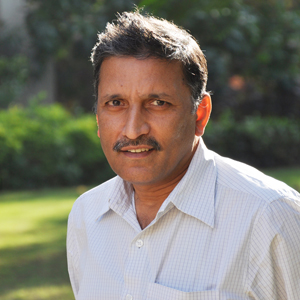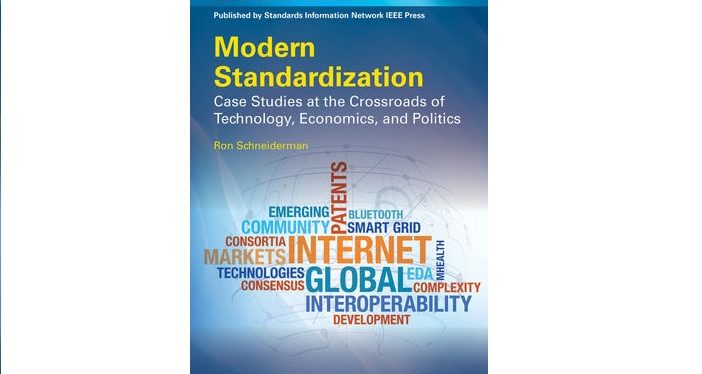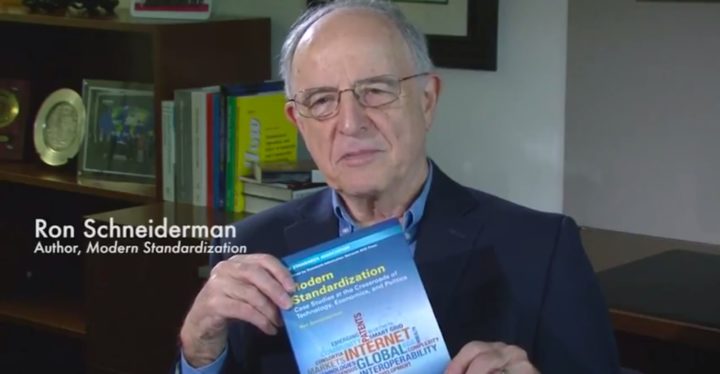A working document on the industry connections activity initiation document (ICAID) of the IEEE Gujarat Section
When on April 3, 1973, Martin Cooper, a Motorola engineer, dialed up their competitor, Joel Engel of AT&T, for the world’s first cellular telephone call from his brick-shaped device while walking in the street, nobody could have realized that this was going to be a disruptive technology in the coming decade and would continue to be today [1].

Fig.1. Dr. Martin Cooper and his fist brick-like mobile device. In less than four decades, mobile phones became smart phones, and have changed the social, cultural, economic, and political equations the world over. Thus, the world has become a global village.
The public launch of Friendster in March 2003 [2] (by Jonathan Abrams, a Canadian programmer) gave birth to the disruptive technology-intensive platform that evolved as “social networking.” Interestingly, even its former CEO, Kent Lindstrom, saw it as nothing more than “the idea was to have the Internet do the work of a dinner party” [3]. The senior editor for internet and technology of Fortune magazine, David Kirkpatrick, also predicted in the same way [4], “There may be a new kind of internet emerging–-one more about connecting people to people, than people to websites,” or as visualized by Mark Pincus, an investor in Friendster and founder of Tribe.net, as a “peopleweb.”
We are living in an age where we are witnessing an explosion of innovation supported by killer technologies triggering disruptions. The complete business landscape of opportunities and challenges is accelerating at a whooping rpm. This is the “digital age.” This accelerating change is supersonic, or even much more than that. It is like floating in a gravitational field of 4G. Businesses have to acclimatize and evolve in sync with this pace. Otherwise, they will perish once they reach a tipping point.
These companies need a digital strategy in black-and-white, and the sooner the better [5]. But unfortunately, the rate of change is so fast it is accelerating at a geometrical progression (we always learned in our high school physics class how to deal with systems with constant acceleration using Newton’s laws of motion, but we were never taught how to write equations of motion when the rate of change of acceleration is also non-zero). This has created a perpetual skill gap. The catch is that in this age of disruptive technologies, if you cannot disrupt your competitors, they will disrupt you. Barnes & Noble, Casio, Kodak, Lucent Technologies, Lotus, MySpace, Nortel, Novell, Polaroid, Silicon Graphics, Sun Microsystems, WordPerfect, are only a few examples of companies of the past. On the other hand, Google disrupted mobile phones (by introducing Android); Facebook and WhatsApp killed SMS (short message service); Netflix cornered the market on content streaming; Amazon shattered the eBook segment (with Kindle); Tesla is reincarnating energy storage systems (by launching Tesla Powerwall); and so on and so forth, to make you feel the thunder [6].The joint venture between MIT and Harvard in delivering edX tells us secretly that even the education sector is feeling the heat of disruption.
All this converges to a platform where we need to understand where the world has been heading. Volcanic eruptions and atomic explosions change the landscape. A technological big bang changes our lifescape; the way we live. The trending lifestyle is living in a smart city. When technologies are capable of serving you better, in a more secure and convenient way, why not live king-size.
The economic canvas of world cities has been in turmoil, too. The City 600, as termed by the McKinsey Global Institute, has been responsible for 60% of global growth, but within this group the 577 middle-weight cities are predicted to shift the center of mass of the global economy by 2025 [7], and it will shift to the southeast–hot spots are China, India, and Latin America.
The Indian minister for Urban Development and Parliamentary Affairs, Mr. Venkaiyah Naidu, told on the occasion of the seminar “Smart Cities for the Next Generation: International Conclave of City Leaders” [8] on 12 January 2015 that the urban population (31% of total population) of India makes up 63% of the country’s GDP. The largest 100 cities of India, comprising 16% of our population and only 0.24% of our land area, account for 43% of GDP. This intrinsic linkage between urbanization and economic growth has prompted the government of India to announce the Smart City Mission. A budget provision of USD$15 billion was made in the financial year 2014–2015, and a formal mission statement and guidelines of the “Smart City: Mission Transform-Nation” was announced in June 2015 [9].
Parallel to this, IEEE Gujarat Section’s volunteers, in resonance with IEEE-SA (IEEE Standards Association) leaders, were contemplating the term “smart city” and how it has been perceived globally. This effort culminated in formal approval of the industry connections activity initiation document (ICAID) with the objective of defining “Smart City–-Compliance Indicators.” The motivation behind this initiative was to make a sincere attempt to design something similar to the CMM level indicators [10] of software development industries or the hotel rating system [11].
Cities around the world are already making tremendous progress in achieving economic, environmental, and social sustainability by implementing innovative systems and services. These are excellent ways to improve city living standards and economies. The concept of smart cities doesn’t compete with these efforts. In fact, a smart city augments these objectives by leveraging cutting-edge technologies. It supports and enhances the quality of work that is already underway.
The term “smart city” is conceived differently in different parts of the globe. It is either used interchangeably or loosely. The interpretation is based on the context in which the term is used. The goal of the proposed activity is to come up with the definition of a smart city and the factors that determine the “smartness” of a city. First, the “indicators of smartness” that are must for a city to be called a smart city will be identified. Based on these indicators and their impact on the overall environment of the city, a ratings index will be developed.
The basic thought process is that in order to be consistent and uniform in the development of a smart city, the developer must follow some standards. These could be standard procedures, standard technologies, standard protocols, standard interoperable features, etc. So the first stepping stone for reaching a uniform and objective scale for setting up a smart city starts with an investigation into applicable standards. It is necessary to produce a list of indicators that should be looked into very carefully by the promoters of a smart city. These indicators will give an idea of the degree of compliance that a city will need to adhere to in order to be called a smart city.
The word “smart” has of late evolved as a concept which is pervasive and addictive. We tend to call everything “smart,” viz., smart phone, smart light, smart TV, smart fridge, smart oven, smart chair, smart device, smart energy meter, smart wearable device, smart watch, smart glass, smart grid, smart home, smart parking, and the list goes on. Loosely interpreted, “smart” means “intelligent.” The infrastructure and overall city facilities may be called “smart,” if they deliver many services without getting affected by moods and emotions, consistently and repeatedly. The quality of service (QoS) of these services is ideally adaptive to local changes in the parameters. For example, a smart street light system will dim the intensity of street lights if no motion is detected for a set duration, and will immediately turn on if a car is sensed on the road. This simple example indicates that smartness is driven by how these smart devices sense the parameters, in another way, by “sensors.”
So what makes a sensor intelligent? A sensor senses the physical parameter it is intended to sense. We can say that the sensor collects the reading (“data”). Then those data are sent to a router or a base station that is programmed to send the data to another server (“cloud service’”). This “sending” may be done on a wired or wireless network or connection. We can say that the base station communicates with the cloud service. The action takes place here. At this point the data is assembled, distributed, processed, makes decisions, and decides on further action. This is what we call data analytics. This step is like crunching the data. Once all of this happens and happens repeatedly, continuously as it is designed for, we say that our system has acquired intelligence and one may call this a “smart system.” From this brief scenario, we may conclude that a smart system
- Collects, communicates, and crunches data,
- Performs (actions), presents (information), and predicts (what’s next).
From our familiar knowledge, we may say that it is a larger picture of an Internet of Things (IoT) application. This smart system could be anything, starting from a smart pen to a smart city. In a smart city sense, more factors add up in the deliverables, such as
- It ensures workability, sustainability, and ultimately livability for its citizens.
Use Case 1 (how a simple application of the smart city age may change the overall economic landscape of the world)
Taking a clue from one of the prime verticals of a smart city, transportation management, let’s tear open the automotive ecosystem. Its stakeholders are: automakers, car dealers, retailers, government (as regulator and policy maker), oil and gas companies, auto insurers, healthcare insurers, hospitals, car repair shops, etc. If the vision of a smart city works, it has been predicted by McKinsey & Company’s report [12] in 2015 that 90% of traffic-related accidents will be reduced. This is made possible through advancements in the production of AVs (autonomous vehicles) and ADAs (advanced driver-assistance systems). It would result in the disappearance of 90% of insurance premiums. Its immediate impact would be an annual saving of nearly USD$200 billion in the form of healthcare costs associated with road accidents [13]. Insurers, hospitals, car repair shops, etc., will have to look for other business opportunities. It will also witness a paradigm shift in the automotive business model that will move from owning a car to a pay-for-use model. It will have a direct impact on the business model of automakers, dealers, and retailers. New business opportunities will boom. Mobile apps for pay-for-use and rent-a-car will grow by leaps and bounds.
![Fig. 2. Google’s iconic driverless car [14].](https://www.standardsuniversity.org/wp-content/uploads/Roy-Fig-2-300x122.jpg)
Fig. 2. Google’s iconic driverless car [14].
![Fig. 3. Typical block diagram of in-vehicle networking [15].](https://www.standardsuniversity.org/wp-content/uploads/Roy-Fig-3-300x202.jpg)
Fig. 3. Typical block diagram of in-vehicle networking [15].
Let’s take the case of data management in a smart city scenario. All verticals of the smart city churn out tons of gigabits of data/information each day. Gone are the days of 3G and LTE. Now we are heading towards 5G. On top of that, IoT applications, M2M technologies–all are growing on an accelerated pace. Imagine the terrific mobile traffic it would generate. This is big data. Massive connectivity among H2M, M2M, and D2D, demand of diverse services, low cost, low power, low latency, high throughput, high reliability, an unmatchable guarantee for QoS are all taken for granted. Therefore, the smart city data infrastructure has to be able to sustain this traffic and ensure these services. So, how to manage it? The implementer has to think through the complete information life cycle and not in bits and pieces. Therefore, as a first step, the government (‘the implementer” or “the owner”) must define information/data and in what format it will be generated/prepared. From a standardization point of view, the set format must
- Find ease in “interoperability” with other/prevailing standards,
- Take into consideration programming standards so that the developers of APIs (application programmable interfaces) find it hassle-free to work on.*
Once the definition and format are fixed, guidelines followed by SOPs (standard operating processes) need to be put in place mandatorily to be followed for
- Acquiring,
- Validating,
- Storing,
- Protecting,
- Processing, and
- Deleting the data.
Besides the above, the implementer also has to consider
- Regulations at the user end,
- Latency and throughput to get the information,
- The ID or address in-network and the application layer to ensure security,
- How to take backups,
- Requirements for the datacenter, etc.
For high-end APIs, the name and version of the security software, the database, information retrieval, fingerprint/biometric tools, machine learning, data/video compression, forensics tools, and other middleware software are to be provided and properly upgraded regularly. Thus will ensure protection from cloning, the creation of fake identities, fishing, vishing, smishing, slow or no recovery from attacks, unauthorized overwriting of data, and other basic privacy issues. In the absence of these fundamental policies, one may completely put the entire smart city infrastructure at a standstill. Contracting the above to a third party as a corrective measure will certainly impact the cost of data guarantee and insurance services.
Use Case 3 (general awareness about use of technology/services)
We want to raise a serious concern here in the broad perspective of the smart city. Despite having so many professional and competent groups contributing to make our experience of living in a smart city a comfortable, convenient, and productive experience, the lack of awareness of the use of these technologies and services may cause immense damage in terms of financial loss and/or reputation.
Let’s look at a use case of a home scenario. WhatsApp claims that communication/transactions on its network are end-to-end secured. All four persons (wife, husband, son, and daughter) communicate on WhatsApp leisurely. They have one data connection for their home, and they create a hotspot within the home so that all of them can use the data service on the home Wi-Fi system created by the hotspot. They are not aware of the security issues of an unsecured wireless network, and therefore whenever the Wi-Fi starts, one of their smart neighbors enters their home network and gets access to all the data transactions this family has been performing. This neighbor can fake/clone/steal the identity of one of the family members, and may misuse the data with malicious intent. This case, from a layman’s perspective, conveys that the security of the home Wi-Fi network is the responsibility of the home users and not of the service provider.
Therefore it becomes the obligation of the implementer (for example “the government”) to train citizens of the smart city, and groom them to use its features and services in the most secure and best way.
To sum up, this article touches upon various aspects of current scenarios of the smart city initiative. The authors wish to highlight a very important aspect of a smart city–-it has to be citizen-centric. Right now it has been emerging as technology-centric, driven by, possibly, the commercial interest of industry giants in this domain. What will happen to poor people, in terms of low awareness and/or low affordability, who use the technology? Will they be thrown out of the boundaries of so-called smart cities? Only time will tell how much governments will be sensitive towards protecting the interest of all its citizens or will they become a simple toy in the hands of industry giants? The policy on Human Capital Valuation, therefore, becomes equally important for a forward-looking government.
We hope that the “happiness quotient” of a smart city will be one of the indicators of the “smartness” of the city.
References
[1] Brustein, J., “The story behind the first cell phone call ever made,” Apr. 2015. [Online]. Available: http://www.bloomberg.com/news/articles/2015-04-24/the-story-behind-the-first-cell-phone-call-ever-made [2] Bleicher, A., “Social networking: Friended–Bandwidth, digital cameras, and a hunger for connectedness have created a virtual dinner party,” IEEE Spectr., Dec 2010. [Online]. Available: http://spectrum.ieee.org/computing/networks/social-networking-friended [3] [Online]. Available: http://www.theworldforgotten.com/showthread.php?t=1587 [4] Kitkpatrick, D., “I get by with a little help from my friends of friends of friends,” Fortune Mag., Oct. 2003. [Online]. Available: http://archive.fortune.com/magazines/fortune/fortune_archive/2003/10/13/350905/index.htm. [5] Grossman, R., “The industries that are being disrupted the most by digital,” Harvard Business Rev., Mar. 2016. [Online]. Available: https://hbr.org/2016/03/the-industries-that-are-being-disrupted-the-most-by-digital [6] Diamandis, P., “12 industries disrupted by tech companies expanding into new markets,” Oct. 2015. [Online]. Available: http://singularityhub.com/2015/10/26/12-industries-disrupted-by-tech-companies-expanding-into-new-markets/ [7] [Online]. Available: http://www.mckinsey.com/global-themes/urbanization/urban-world-mapping-the-economic-power-of-cities [8] [Online]. Available: http://pib.nic.in/newsite/PrintRelease.aspx?relid=114563 [9] [Online]. Available: http://smartcities.gov.in/writereaddata/smartcityguidelines.pdf [10] [Online]. Available: https://en.wikipedia.org/wiki/Capability_Maturity_Model [11] [Online]. Available: http://touristmeetstraveler.com/2015/forbes-aaa-and-michelin-hotel-rating-stars-explained/ [12] Bertoncello, M. and D. Wee, “Ten ways autonomous driving could redefine the automotive world,” McKinsey & Company, June 2015. [Online]. Available: http://www.mckinsey.com/industries/automotive-and-assembly/our-insights/ten-ways-autonomous-driving-could-redefine-the-automotive-world [13] Crew, B., “They’re set to have one of the biggest impacts on public health ever,” Oct. 2015. [Online]. Available: http://www.sciencealert.com/driverless-cars-could-reduce-traffic-fatalities-by-up-to-90-says-report [14] [Online]. Available: http://www.sciencealert.com/driverless-cars-could-reduce-traffic-fatalities-by-up-to-90-says-report [15] [Online]. Available: https://www.renesas.com/enin/solutions/automotive/technology/networking.html Dr. Anil Roy
Dr. Anil Roy
anilkroy@ieee.org
http://faculty.daiict.ac.in/anil-roy/
Dr. Anil Roy is an alumnus of IIT Delhi (India) from where he earned his Ph.D. in Physics in the area of Quantum Optics in 1993. He also worked at the Centre for Theoretical Studies at the Indian Institute of Science, Bangalore, and with the Optical Fiber group at IIT Delhi, prior to joining DA-IICT (his current organization, www.daiict.ac.in) as a faculty member in 2003. His main academic interest areas are fiber optics, semiconductor physics, and applications of image processing and technologies for humanitarian challenges. He is a senior member of IEEE. He is a member of IEEE ComSoc, SPS, SSCS, CIS, and the IEEE Sensors Council, Nanotechnology Council, and Internet of Things (IoT) Technical Community. He is a Member-at-Large of the IEEE Sensors Council for 2015–2016.
* For example, Facebook provided support in terms of SDK Tools that promoted the development of millions of APIs that helped the complete ecosystem grow around it.




